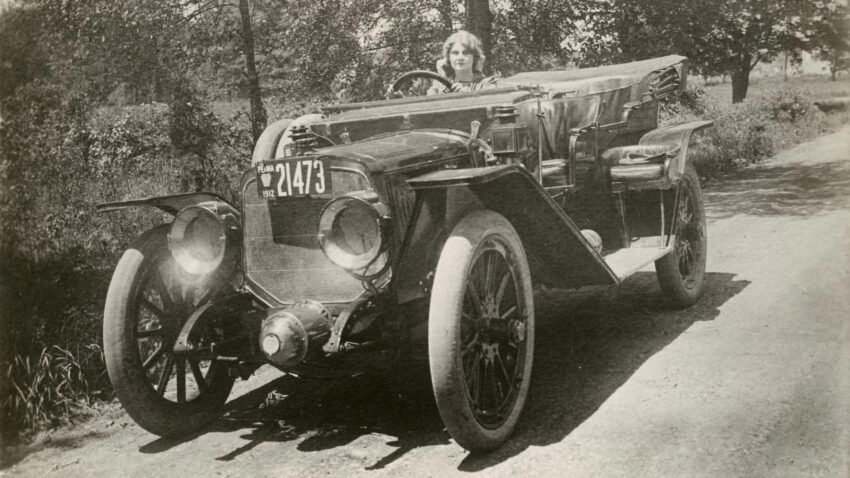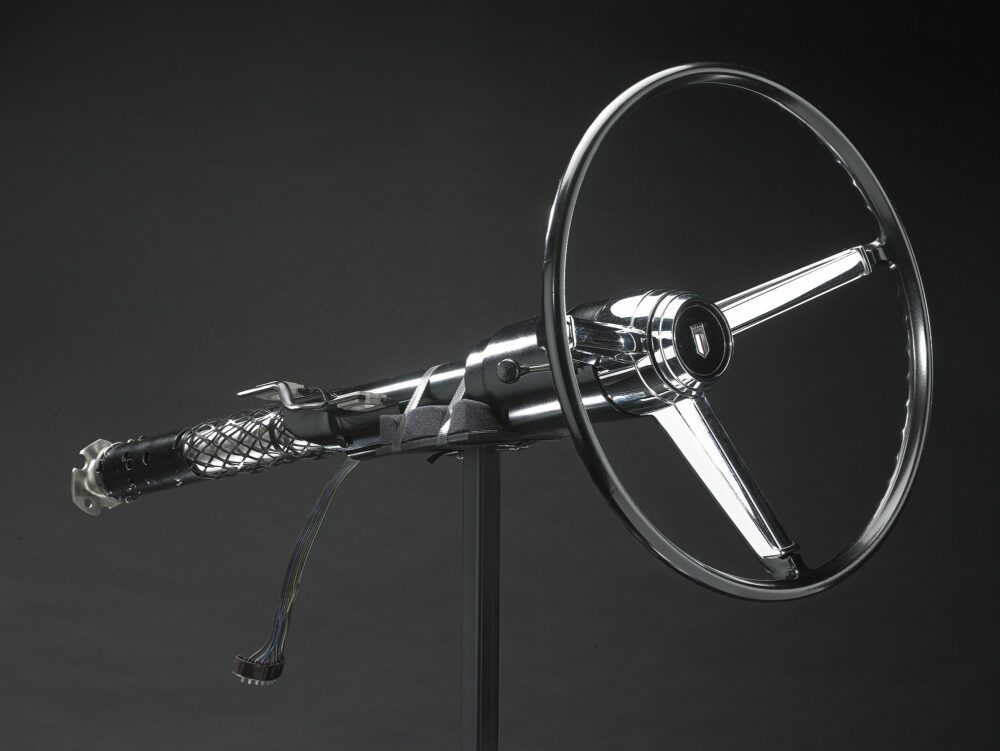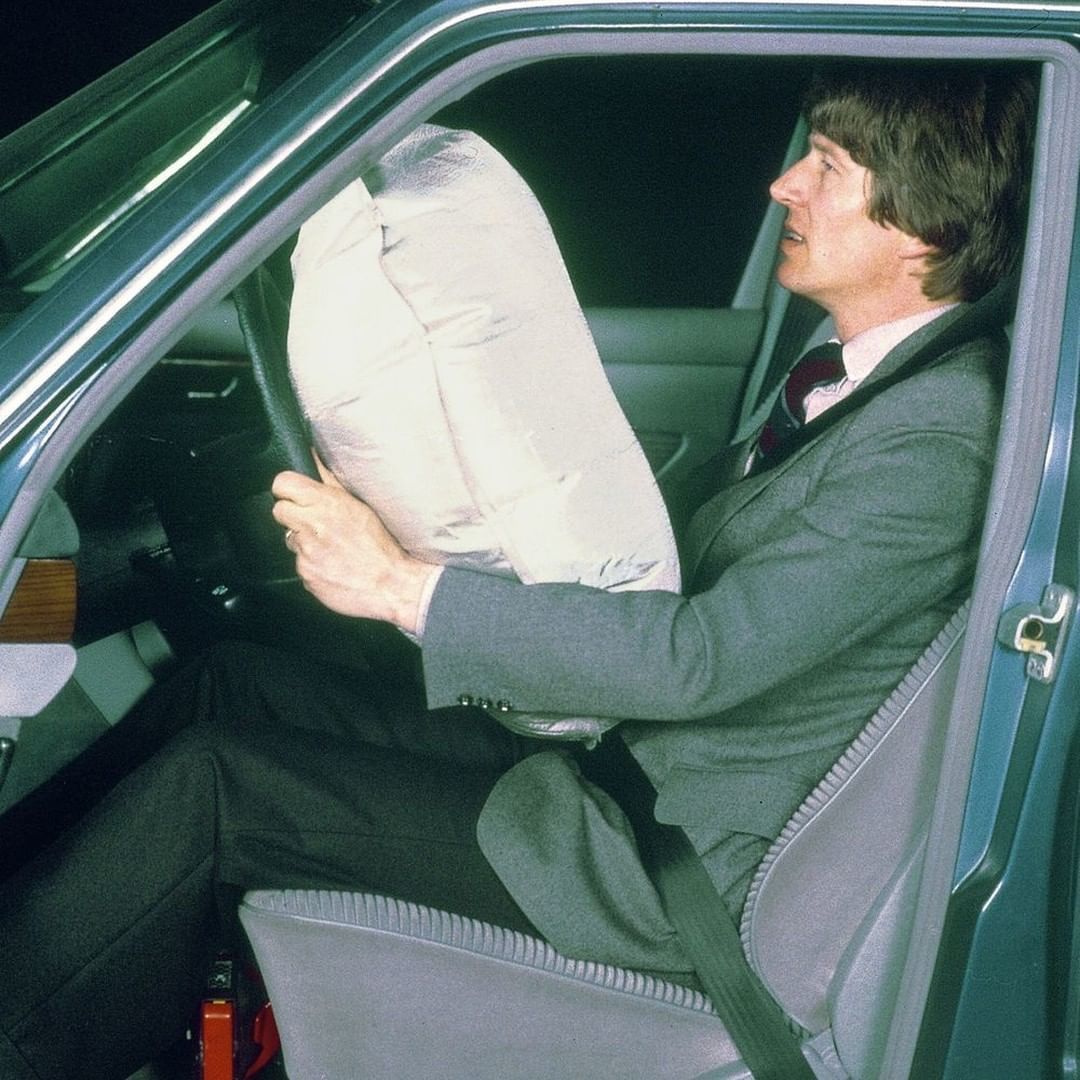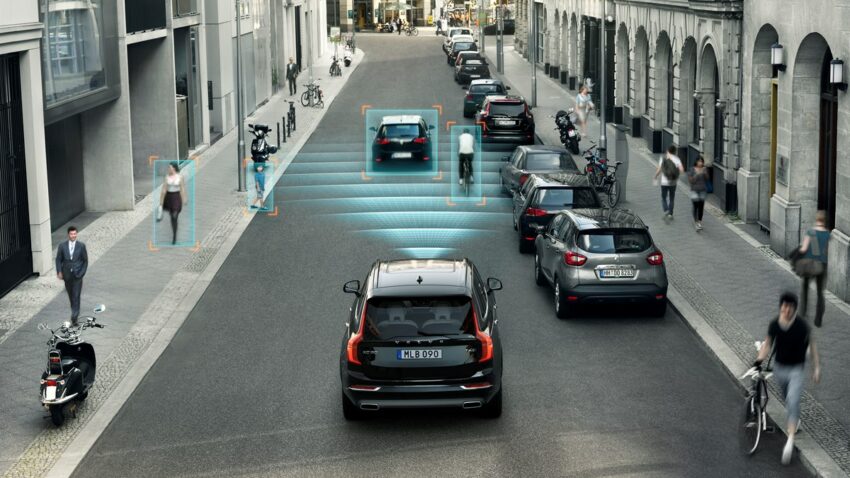Although the history of the very first automobile can be traced back to the late 1800s, it wasn’t until the mass production of the Ford Model T in the early 1900s that drivers and passengers realized how exciting, yet dangerous, an automobile could be. Initially it was all too exciting to be able to move around in an automobile but as more & more cars started to appear, cases of collision between two automobiles & even those involving pedestrians started to appear. And that’s where the vehicle safety became a concern.

Related: Steering Wheel- Design & Evolution
In older automobiles, many dangers lurk including sharp corners, easily breakable glass, and little to no structural protection. The evolution of car safety can be traced back to simply the beginning such as the installation of hydraulic brakes, bear in mind cars of those days could barely do around 70km/h at max. Since then, vehicle safety has come a long way, from installation of basic components to the inclusion of highly sophisticated computer controlled devices. Below is a timeline of many important changes made throughout the years to protect drivers as well as the passengers.
1900-1920
- 1903 – Wiper blades were developed and patented by Mary Anderson. A simple lever inside the car connected to a rubber blade on the outside that was operated by hand.
- 1911 – Rear view mirrors were used for the first time in the opening Indianapolis 500 race by Ray Harroun, who attached it to his Marmon Wasp. Harroun claimed to be inspired by a similar idea he saw on a horse-drawn carriage few years before.
- 1914 – Hollywood actress and silent-movie star, Florence Lawrence, invented the earliest turning indicators. This was originally called an ‘auto-signaling arm’ on the back of the fender which could be raised or lowered by electrical push buttons.

1920-1950
- 1921 – Benjamin Katz invented the headrest to reduce the harm caused by whiplash in rear-end accidents. Hydraulic brakes were also used in road cars for the first time by Frederick Duesenberg.
- 1927 – Laminated glass, or safety glass, was used in windshields to prevent them from shattering on impact.
- 1934 – General Motors performed the first ever crash test
- 1937 – Several auto manufacturers add a flat, smooth dash, rounded door handles, and a windshield wiper to their models as well as additional cushioning to the back of front seats for better backseat passenger protection
- 1949 – Chrysler incorporates disc brakes into their Crown Imperial

1950-1970
- 1950 – The first ever crash test dummy was created by Samuel W. Alderson, called Sierra Sam, which was used for aviation. Alderson then created a crash test dummy for motor vehicles in the early 50s
- 1951 – Walter Linderer created the airbag, which could be released by the driver or by contact to the car bumper.
- 1952 – Mercedes Benz engineer Bela Barenyi invented the crumple zone concept, designed to absorb the force of impact in a crash.
- 1953 – Jaguar and Dunlop make a breakthrough with more reliable Caliper-Type disc brakes, helping the small company to win the 1953 24 Hour Le Mans.
- 1958 – The United Nations establishes the World Forum for Harmonization of Vehicle Regulations which is used to create a uniform system of regulations for vehicle safety, theft resistance, environmental regulations, and more
- 1959 – Volvo introduce Nils Bohlin’s three-point seatbelt, strapping over the lap and shoulder for the first time to provide extra protection. It remains one of the most effective car safety features ever created.

- 1963 – the inertia-reel seatbelt was introduced by Excelsior Motor Company, allowing the seatbelt to re-adjust to the passenger’s preference.
- 1964 – Intermittent wipers were introduced.
- 1964 – Volvo develops the first rear-facing child seat
- 1966 – Cars built in Europe must now have a front seat belt fitted. Padded dashboards become mandatory, as well as front and rear lap belts and white reverse lights. The Jensen FF became the first car to feature the anti-lock braking system that was previously used in aircrafts.
- 1968 – The first Federal Motor Vehicle Safety Standards in the US make it mandatory to have collapsible steering columns, side marker lights, and front-seat shoulder belts in all vehicles.
- 1969 – Volvo introduces front-seat head restraints to protect the head and neck in rear collisions.

1970s and 1980s
- 1970 – Seatbelts became compulsory in Australia, the first country in the world to do so.
- 1974 – General Motors provide optional airbags for the driver and front passenger’s seats.
- 1978 – Mercedes introduce the first electronic anti-lock braking system in its Mercedes-Benz S-Class.
- 1979 – The National Highway Traffic Safety Administration in America begins crash testing new cars and publishing results.
- 1981 – Mercedes-Benz release the first production car with supplemental restraint system (SRS) airbags for the driver’s seat.
- 1983 – Wearing front seatbelts becomes compulsory in the UK with 90% of British drivers complying immediately.
- 1987 – Fitting of rear seatbelts become compulsory in the UK. Mercedes-Benz, Toyota, and BMW introduce traction control, designed to keep traction whilst accelerating.

1990s
- 1991 – Volvo introduces its side impact protection system, designed to spread the force of impact over the entire side of the car rather than one section.
- 1994 – Volvo introduces side impact air bags.
- 1995 – Mercedes-Benz and Bosch introduce electronic stability control (ESC), helping to improve vehicle stability.
- 1996 – Mercedes-Benz introduce the Brake Assist System (BAS)
- 1996 – First ever knee airbag was introduced in Kia Sportage.
- 1997 – the European New Car Assessment Program (Euro NCAP) is formed, performing crash tests and publishing safety reports.

2000s
- 2000 – Iteris developed the Lane Departure Warning System for trucks in Europe, which used visual, audible, and vibration warnings to alert the driver if they’re leaving their lane.
- 2004 – Volvo introduce the blind spot information system (BLIS) using cameras and motion sensors to avoid accidental collisions when the driver is parking or switching lanes.
- 2005 – Jaguar and Citroen develop the pop-up bonnet, designed to reduce pedestrian injury risk.
- 2008 – Volvo introduce autonomous emergency braking (AEB) on its XC60, automatically braking to help drivers mitigate or prevent collisions when sensors pick up an oncoming vehicle.
- 2009 – Citroen and Bosch introduce intelligent anti-skid system called Snowmotion, giving better vehicle control in snowy or icy conditions.
- 2010 – Volvo develop the pedestrian detection system, causing cars to brake automatically when they detect a pedestrian. It uses camera and radar technology to keep an eye out for other vehicles and pedestrians.

In the days of old, physicians, inventors, and auto journalists noted that in an accident the driver and passengers always collided with the dashboard, steering wheel, windshield, or doors, resulting in serious or even fatal injuries. Dashboard knobs, door handles, radio grilles, steering columns, and other fixtures were knife-like projections that could impale or lacerate motorists, hence these were gradually phased out and were replaced with more suitable alternatives. Likewise, the use of chrome on outer parts of the car such as bumpers, wheel caps, side mirrors, door handles, wiper blades, radiator grille & hood ornaments etc.
Related: Things That We Miss About Old Cars
Today automakers put a lot of focus on occupant as well as pedestrian safety due to stringent regulations in key markets. For example, the pillars have become thick to improve the structural integrity of passenger compartment. The dynamically raised bonnets that leave enough space beneath the hood, keep a struck pedestrian’s head from hitting the top of the engine in an event if collsion. Covering the engine with a plastic cover is also part of the pedestrian safety regulations. Plus the use of high strength materials in body frame makes these vehicles lighter yet structurally stronger thus are able to absorb impact much better than older vehicles.

And its not just going to end here, as time progresses more & more safety features will be making their way into modern vehicles. For example, Honda has been working on the center airbag technology which will prevent driver & front passenger to collide against each other in case of side impact collision. Hyundai is working on multi-collision airbag system which will be helpful in multi-collision accident situations, where the primary impact is followed by a secondary one with a surrounding object– usually a tree, pole or street sign. Nissan is developing B2V (Brain to Vehicle) technology that will enable vehicles to interpret signals from the driver’s brain, redefining how people interact with their cars. Toyota is developing a cloaking device which will be used on the A-pillars to offer a transparent view to see what’s around them.
Related: Paddle Shifters- How It All Started?
And as we are moving towards electrified and self-driving cars, which are already able to detect other vehicles & objects on the road and are capable to take you to the destination by identifying the route themselves, automakers are working on vehicle-to-vehicle communication which will be able to inform other cars about a possible occurrence of sudden braking, overtaking or other instances in order to avoid collisions.

A computer animation professional with over 23 years of industry experience having served in leading organizations, TV channels & production facilities in Pakistan. An avid car enthusiast and petrolhead with an affection to deliver quality content to help shape opinions. Formerly written for PakWheels as well as major publications including Dawn. Founder of CarSpiritPK.com




